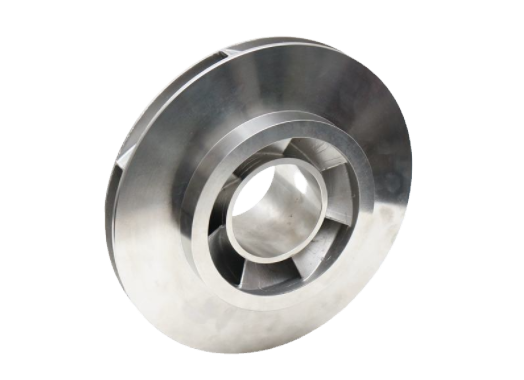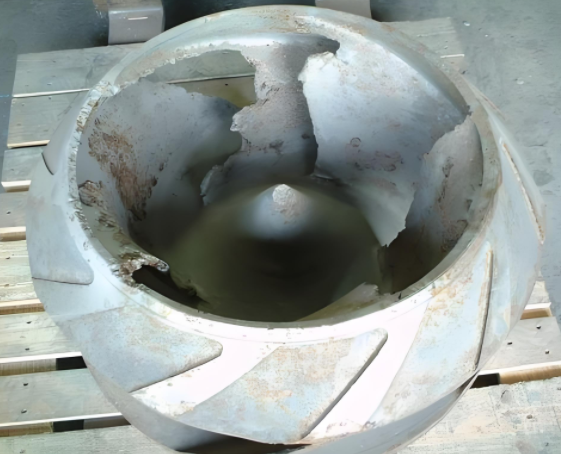Stainless steel impellers are vital components in pumps, turbines, and other fluid-handling systems, frequently exposed to harsh environments where corrosion can impair performance and longevity. Optimizing their corrosion resistance is critical to ensure operational reliability, minimize maintenance costs, and extend service life. This guide provides a systematic, experience-based approach to enhancing the corrosion resistance of stainless steel impellers, focusing on material selection, surface treatments, and design considerations. The following sections detail proven methods, supported by technical insights and specific parameters, to achieve superior corrosion resistance.
Understanding Corrosion in Stainless Steel Impellers
Corrosion in stainless steel impellers results from electrochemical reactions between the metal surface and the surrounding environment, particularly in the presence of aggressive ions such as chlorides, sulfides, or acids. Stainless steel’s corrosion resistance stems from a passive chromium oxide layer that forms naturally upon exposure to oxygen. However, this layer can degrade under specific conditions, leading to localized corrosion such as pitting, crevice corrosion, or stress corrosion cracking (SCC). For impellers, these issues are intensified by dynamic operating conditions, including high fluid velocities, cavitation, and mechanical stresses.
Pitting corrosion manifests as small, deep pits that can penetrate the impeller surface, compromising structural integrity. Crevice corrosion occurs in confined areas with limited oxygen, such as welds or joints. SCC, driven by tensile stresses and corrosive media, can cause sudden failures. Understanding these corrosion mechanisms is essential for selecting effective strategies to enhance impeller durability.
Material Selection for Enhanced Corrosion Resistance
The choice of stainless steel grade significantly influences an impeller’s corrosion resistance. Different grades provide varying levels of resistance based on their alloying elements, particularly chromium, nickel, and molybdenum. The following table outlines suitable stainless steel grades for impellers and their properties.
| Stainless Steel Grade | Composition (%) | Corrosion Resistance Properties | Anwendungen |
|---|---|---|---|
| 316L (AISI 316L) | Cr: 16-18, Ni: 10-14, Mo: 2-3, C: ≤0.03 | Excellent resistance to pitting and crevice corrosion in chloride environments | Marine, chemical processing, mildly acidic fluids |
| Duplex 2205 (UNS S32205) | Cr: 22-23, Ni: 4.5-6.5, Mo: 3-3.5, N: 0.14-0.2 | Superior resistance to pitting, crevice corrosion, and SCC | High-chloride, high-pressure environments |
| Super Duplex 2507 (UNS S32750) | Cr: 24-26, Ni: 6-8, Mo: 3-5, N: 0.24-0.32 | Exceptional resistance to aggressive corrosive media | Seawater, acidic, and high-temperature applications |
Selection Guidelines:
- 316L is suitable for general-purpose applications with moderate chloride exposure, offering a balance of cost and performance.
- Duplex 2205 provides enhanced resistance to pitting and SCC, ideal for impellers in high-pressure or saline environments.
- Super Duplex 2507 is recommended for extreme conditions, such as seawater or highly acidic fluids, due to its high molybdenum and nitrogen content.
- Consider the operating environment’s pH, temperature, and chloride concentration when selecting a grade. For example, in seawater (chloride content ~19,000 ppm), Super Duplex 2507 offers a pitting resistance equivalent number (PREN) above 40, ensuring robust performance.

Surface Treatments for Corrosion Protection
Surface treatments enhance the corrosion resistance of stainless steel impellers by reinforcing the passive layer, reducing surface irregularities, or applying protective coatings. Below are the most effective surface treatment methods for impellers.
Passivation: Passivation involves treating the impeller surface with a nitric or citric acid solution to remove free iron and enhance the chromium oxide layer. This process improves resistance to pitting and crevice corrosion. For example, ASTM A967 specifies passivation using 20-25% nitric acid at 20-50°C for 30 minutes.
Electropolishing: Electropolishing smooths the impeller surface by removing microscopic peaks, reducing sites for corrosion initiation. It also enhances the chromium-to-iron ratio in the passive layer. Typical parameters include an electrolyte solution of phosphoric and sulfuric acids at 50-70°C with a current density of 0.2-0.5 A/cm².
Coatings: Protective coatings, such as nickel-based or ceramic coatings, provide a barrier against corrosive media. For instance, a 50-100 µm thick nickel-phosphorus coating applied via electroless plating can significantly reduce corrosion in acidic environments. However, coatings must be carefully selected to withstand mechanical stresses and fluid abrasion.
Surface Finishing: Polishing to a surface roughness (Ra) of ≤0.8 µm minimizes crevices where corrosive agents can accumulate. Mechanical polishing or abrasive blasting with glass beads can achieve this finish, improving corrosion resistance and cleanability.
Design Considerations for Corrosion Resistance
Optimizing impeller design is critical to minimizing corrosion risks. Poor design can exacerbate corrosion by creating areas prone to stagnation, cavitation, or stress concentration. Below are key design considerations.
Geometry Optimization: Smooth, streamlined impeller geometries reduce turbulence and stagnation zones where corrosive agents can accumulate. Avoid sharp corners or tight crevices, as these promote crevice corrosion. For example, a fillet radius of ≥2 mm at weld joints can minimize crevice formation.
Cavitation Prevention: Cavitation, caused by rapid pressure changes in the fluid, can damage the passive layer and accelerate corrosion. Designing impellers with a net positive suction head (NPSH) margin of at least 1.5 times the required NPSH minimizes cavitation risks.
Stress Reduction: High tensile stresses can induce SCC, particularly in chloride-rich environments. Finite element analysis (FEA) can identify stress concentration areas, allowing designers to adjust blade thickness or curvature. For instance, maintaining a maximum stress below 50% of the material’s yield strength reduces SCC risk.
Weld Imperfections: Welds are susceptible to corrosion due to microstructural changes and residual stresses. Use low-carbon grades (e.g., 316L) and employ post-weld heat treatment at 850-900°C for 1-2 hours to relieve stresses and restore corrosion resistance.
Environmental and Operational Considerations
The operating environment and conditions significantly affect impeller corrosion. Key factors include fluid composition, temperature, and flow dynamics.
Fluid Composition: Analyze the fluid’s pH, chloride content, and presence of oxidizing agents. For example, fluids with pH < 4 or chloride concentrations >10,000 ppm require higher-grade alloys like Super Duplex 2507. Adding corrosion inhibitors, such as sodium molybdate (500-1000 ppm), can further protect impellers in aggressive fluids.
Temperaturkontrolle: Elevated temperatures accelerate corrosion by weakening the passive layer. For instance, 316L is suitable up to 60°C in chloride environments, while Super Duplex 2507 can withstand temperatures up to 120°C. Ensure operating temperatures remain within the material’s limits.
Flow Dynamics: High fluid velocities (>5 m/s) can erode the passive layer, while low velocities (<0.5 m/s) promote stagnation and crevice corrosion. Design systems to maintain optimal flow rates, typically 1-3 m/s, to balance corrosion and erosion risks.

Maintenance and Monitoring Practices
Regular maintenance and monitoring are essential to sustain corrosion resistance over time. Implementing the following practices ensures long-term impeller performance.
Regular Inspections: Conduct visual and non-destructive testing (NDT), such as dye penetrant testing, every 6-12 months to detect early signs of pitting or cracking. Ultrasonic thickness measurements can monitor material loss in critical areas.
Cleaning Protocols: Remove deposits and contaminants through periodic cleaning with non-aggressive agents, such as citric acid-based solutions (5-10% concentration at 40°C). Avoid chloride-based cleaners, which can initiate pitting.
Corrosion Monitoring: Install corrosion probes or coupons in the system to measure corrosion rates in real time. For example, a corrosion rate of <0.1 mm/year indicates adequate material performance in most applications.
Schlussfolgerung
Optimizing the corrosion resistance of stainless steel impellers requires a multifaceted approach, combining careful material selection, effective surface treatments, optimized design, and proactive maintenance. By selecting appropriate stainless steel grades, such as 316L, Duplex 2205, or Super Duplex 2507, and applying treatments like passivation or electropolishing, manufacturers can significantly enhance impeller durability. Thoughtful design considerations, such as smooth geometries and stress reduction, further mitigate corrosion risks. Finally, regular monitoring and maintenance ensure long-term performance in corrosive environments. This systematic strategy, grounded in technical expertise and precise parameters, delivers reliable, long-lasting stainless steel impellers for demanding applications.
